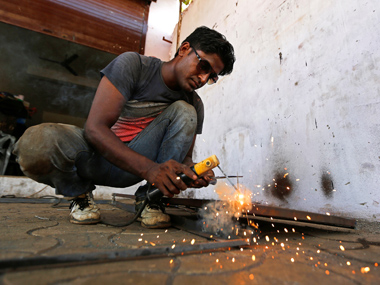A full-blown unemployment crisis is looming over the Indian economy. And, for the first time, there is evidence to show that this crisis makes no distinction between the political persuasions of one kind or another. According to a recently released academic paper titled: India’s Employment Crisis: Rising Education Levels and Falling Non-agricultural Job Growth by Santosh Mehrotra and Jajati K Parida and published by the Centre of Sustainable Employment at the
Azim Premji University , India lost no less than nine million jobs in six years between 2011-12 and 2017-18, straddling three years each of the rule of Manmohan Singh’s UPA and Narendra Modi’s NDA. This is unprecedented. Real wages also declined in the same period. Interestingly, what the paper says is contradictory to the job scenario projected by a study by the Economic Advisory Council to the Prime Minister that claimed that total employment grew from 433 million in 2011-12 to 457 million in 2017-18. Calling this trend (decline in total unemployment between FY2012 and FY2018) ‘unprecedented’, i.e. the first time total employment is falling at this scale, the paper said: “Due to a decline of employment in agriculture and manufacturing and slow growth of construction jobs, the process of structural transformation, which had gained momentum post-2004-5, has stalled since 2012. Mounting unemployment of educated youth, and poor quality of non-farm jobs have caused an increase in the disheartened labour force,” the paper said. This is another grim reminder of the worrying course of the economy and the rise in unemployment. Of course, this isn’t the first time experts are warning about the state of jobs in the country.
The National Sample Survey Office’s (NSSO) job survey for the year 2017-18 had shown a jump in the unemployment rate to over 6 percent, a 45-year high. The Centre for Monitoring Indian Economy (CMIE) has been warning about the decline in job availability even for skilled youth, for quite some time now. The lack of availability of employment generation commensurate with the increase in population indicates the economy is on course to a full-blown unemployment crisis faster than what experts warned initially.
The CSE paper has some detailed findings. Key findings of the survey One of the most important aspects is that real wages have not increased between 2011-12 and 2017-18 in neither rural nor urban areas. Real wages are wages adjusted for inflation and the purchasing power of the individual. This would, in turn, mean that actual poverty might not have declined as certain surveys have shown. Second, agriculture is fast losing its tag of the biggest employer. The share of employment in agriculture and allied sector also declined from 49 percent to about 44 percent (Table 1). During this period manufacturing also recorded a 3.5 million decline in jobs, which resulted in a fall in its share of employment from 12.6 to 12.1 percent. The manufacturing sector (mostly construction) which was creating about 4 million jobs per annum during 2004-05 and 2011-12, created only about 0.6 million per annum during 2011-12 and 2017-18 (Table 1). The slow growth of construction jobs has negative implications for low-skilled employment, real wages and the incidence of poverty. The only sector which sustained growth in jobs (3 million per annum) is services, although the quality of jobs in this sector is mostly poor (outside of modern services). The Narendra Modi government, very prickly about criticism on the economy, has been defending the problem of job deficit by picking the methodology that suits its counter-narrative, using the EPFO-based methodology. But there is an issue with that. The EPFO-based employment mapping does not capture data in the informal sector, while other studies like CMIE base their findings on household surveys to arrive at the unemployment figures. Second, there may have been a spike in new EPFO registrations, but many of them may not be active accounts. What this means is that not all the new registrations may be of people currently employed. Experts have cited some more issues with using EPFO data-based methodology to calculate employment/unemployment figures. The deterioration in the job situation raises a question mark on the quality of GDP growth the Indian economy witnessed in the past decade. It shows that the fruits of an average 6-7 percent GDP growth have failed to reach the common man—to generate jobs and handhold the poor out of poverty as the official numbers had us believe. It is high time the government in consultation with experts formulates a national policy for employment generation. Baby steps and sector-specific policy tweaks will not work anymore. This isn’t about a blame game. It is about what we can do to arrest the unemployment slide.


)
)
)
)
)
)
)
)
)



